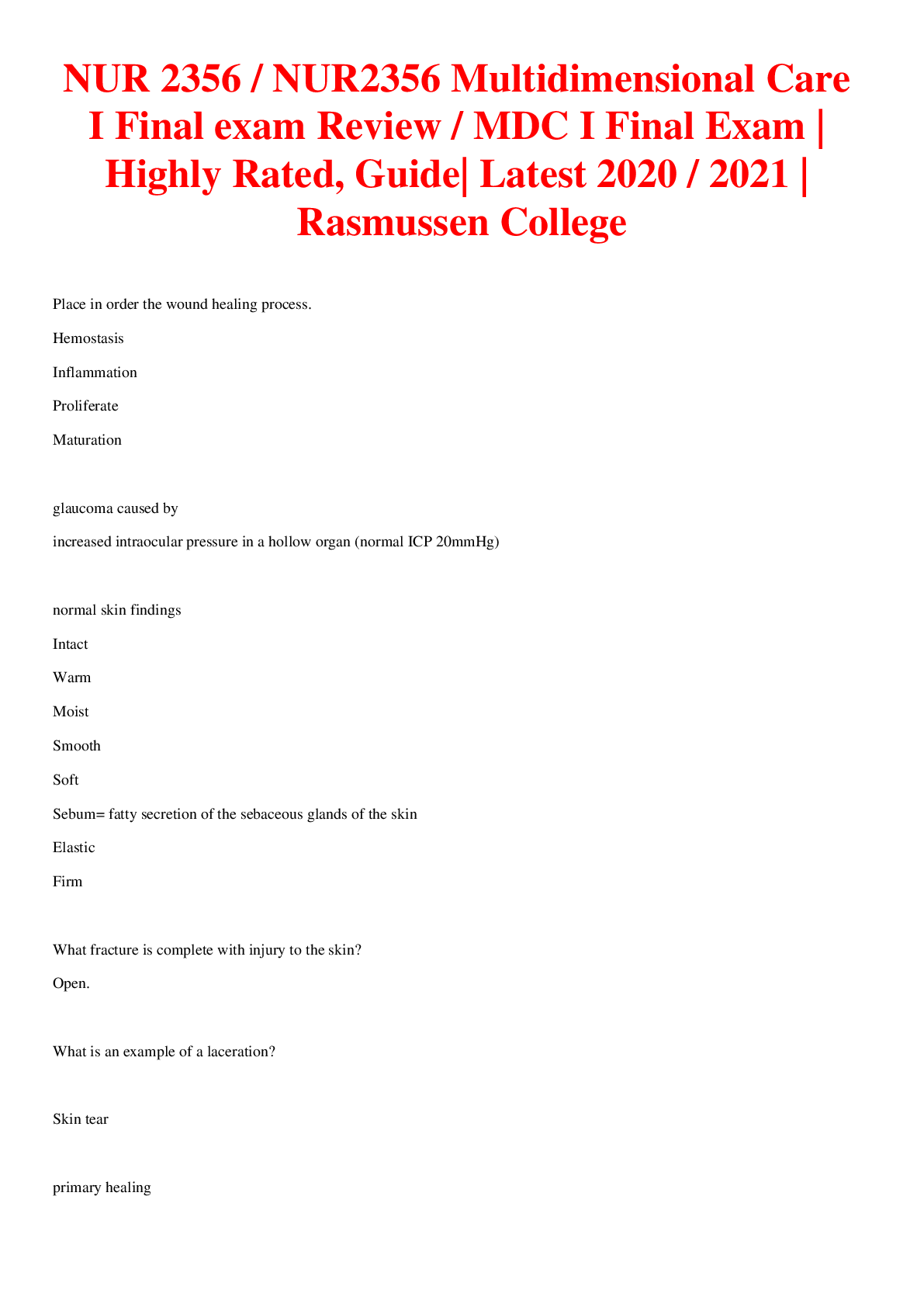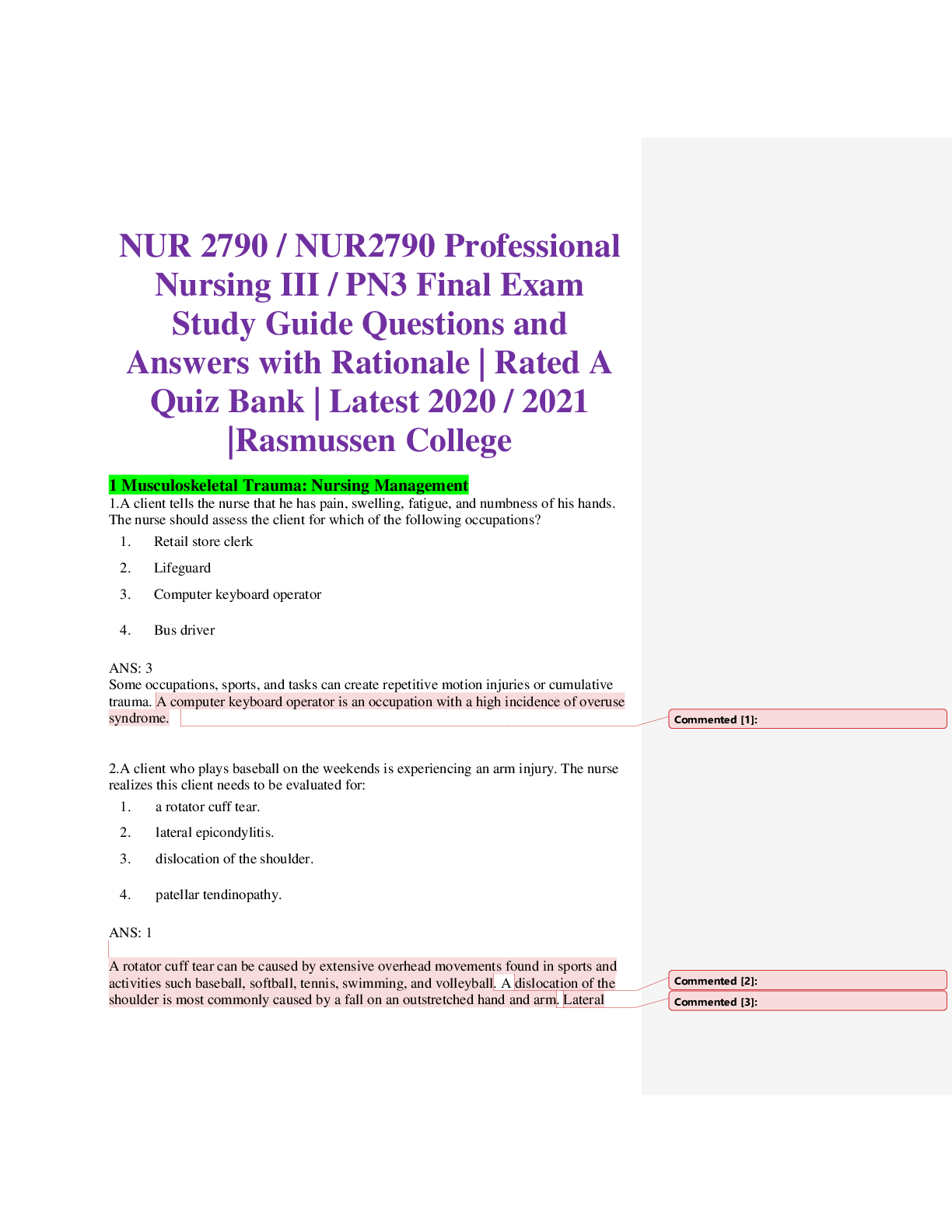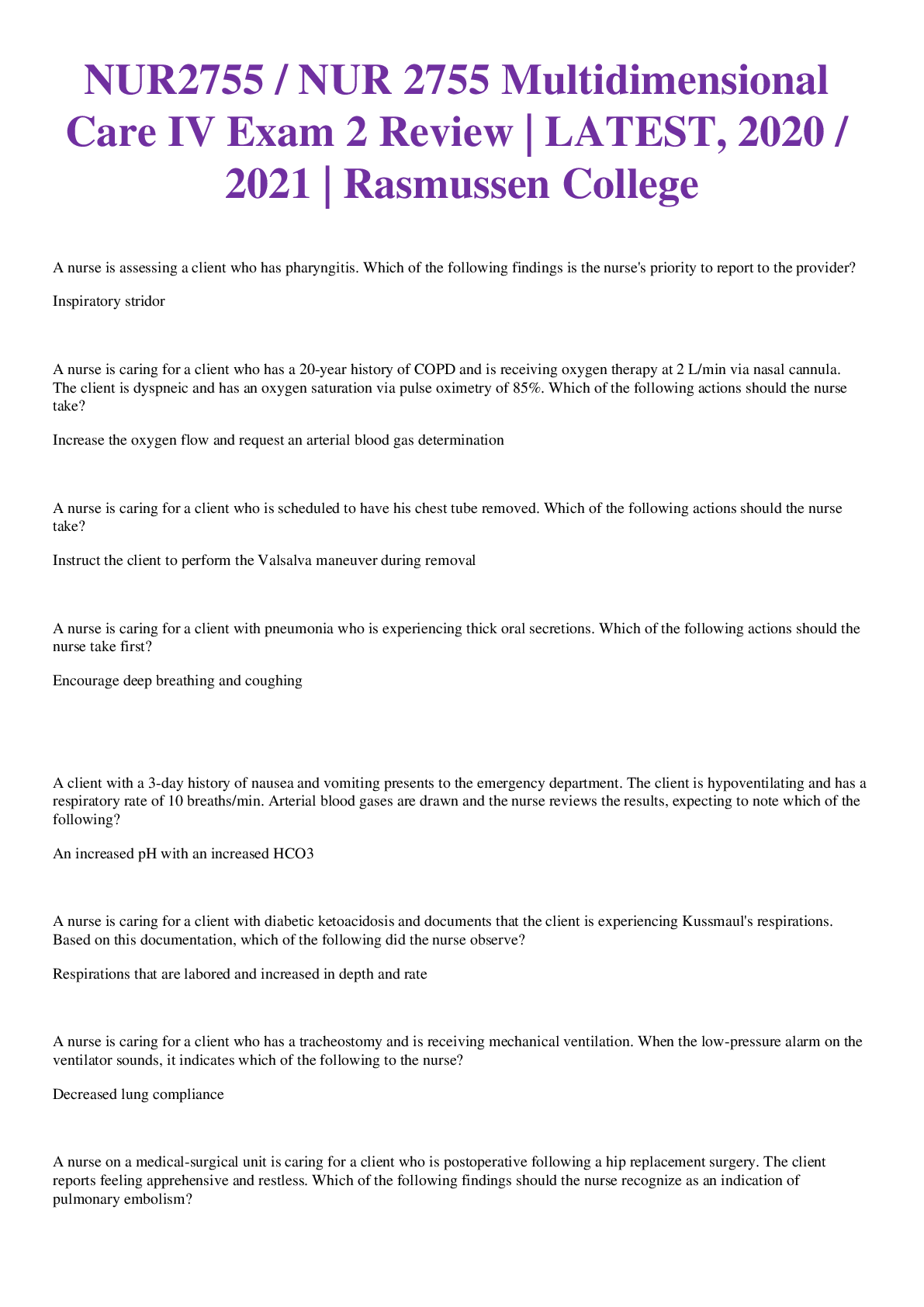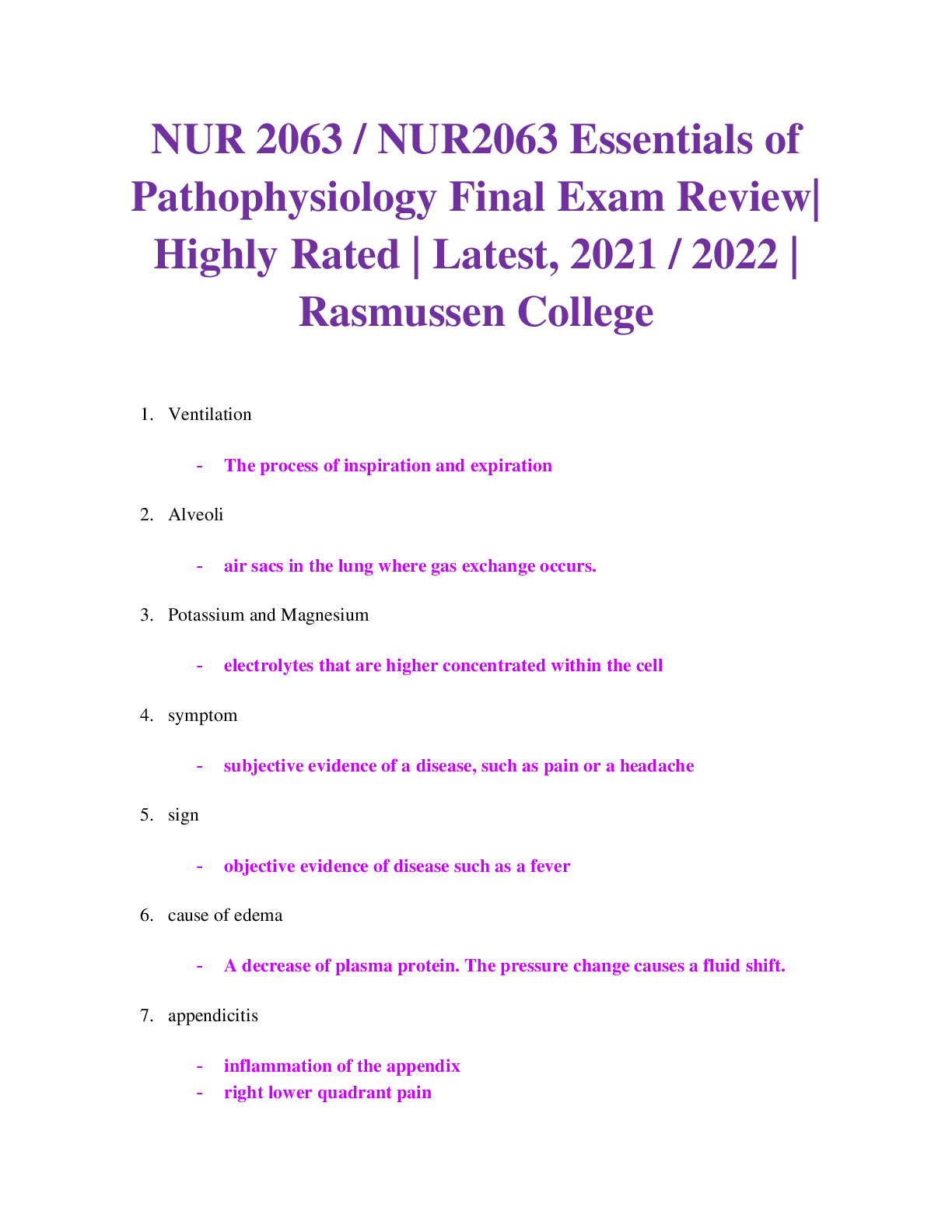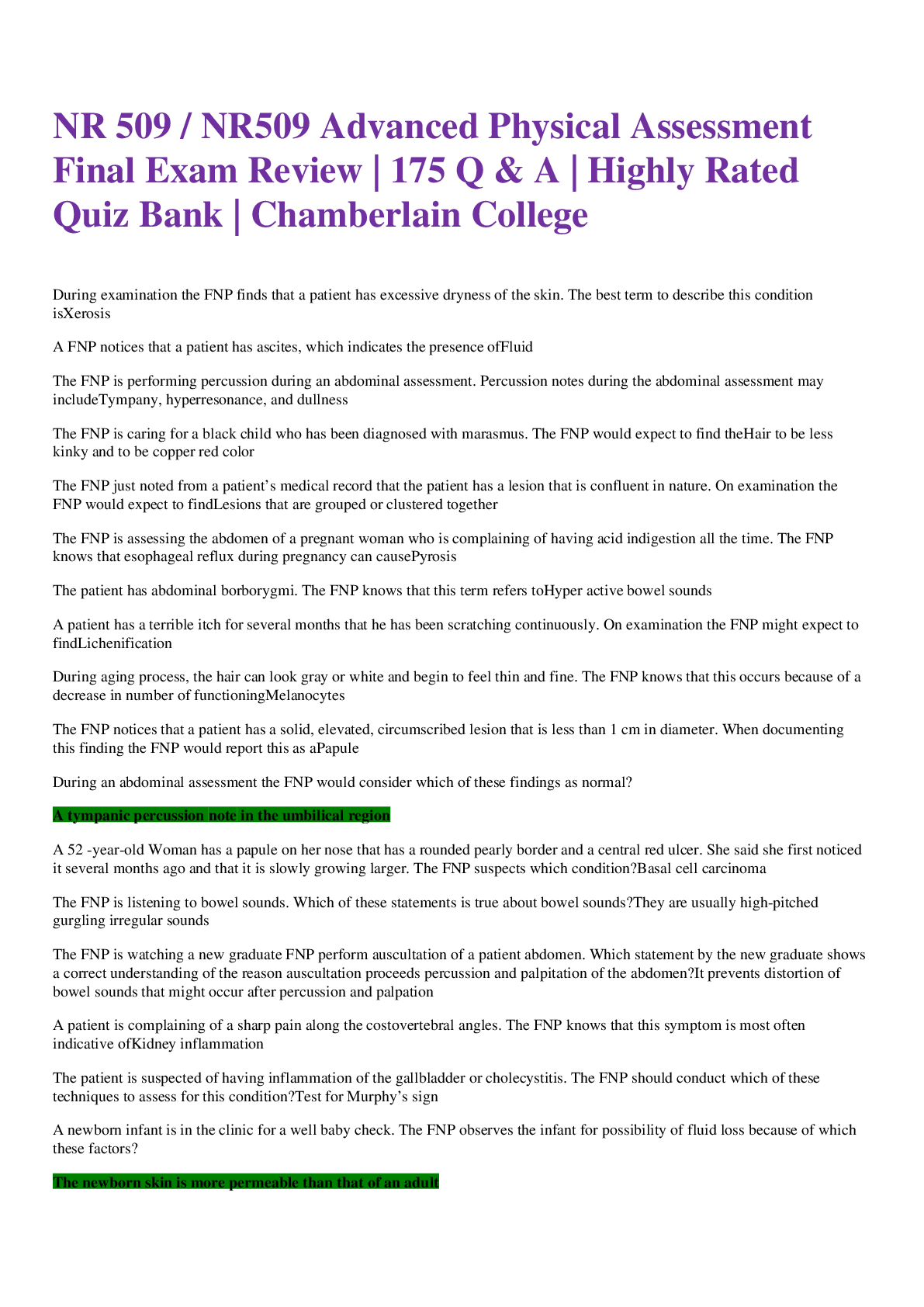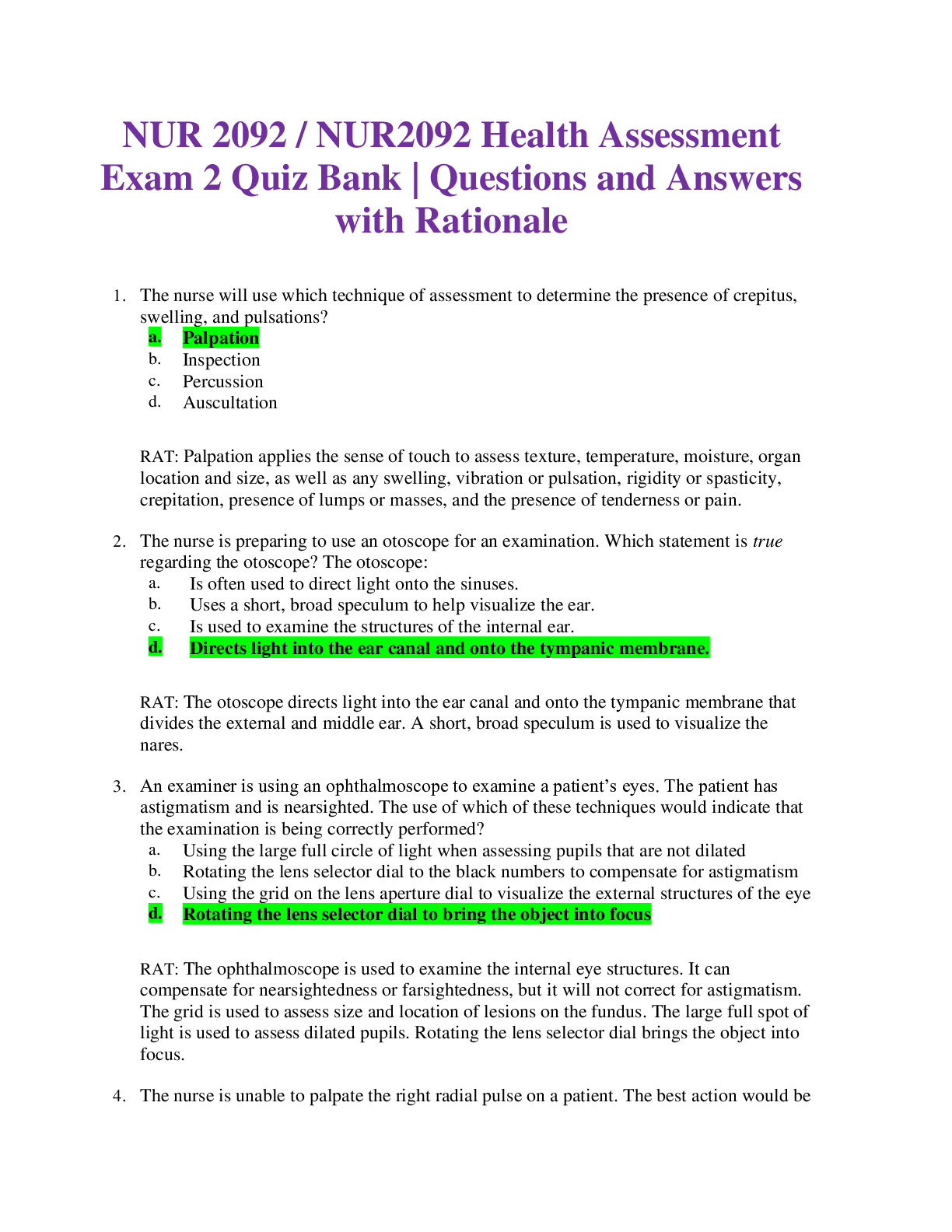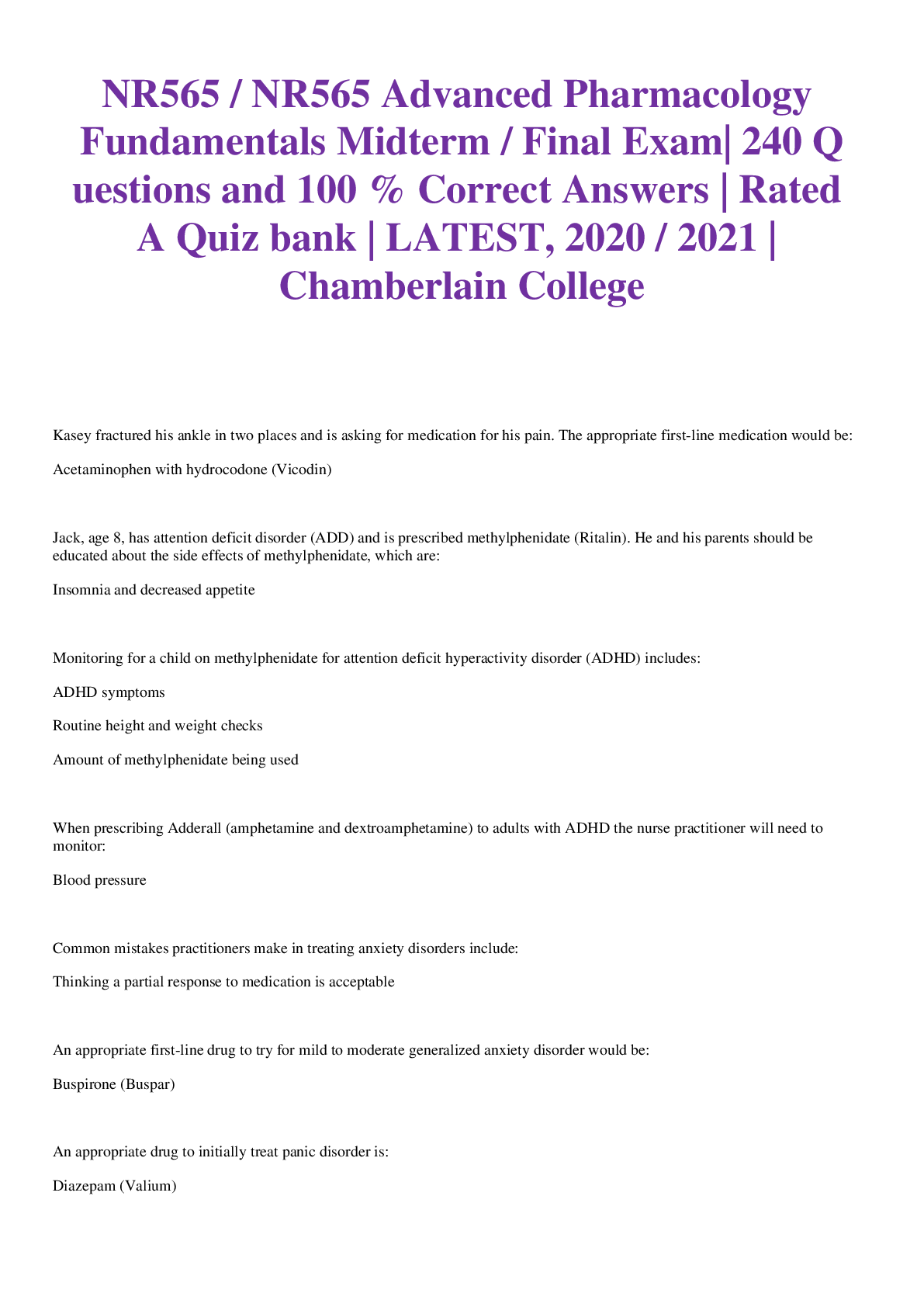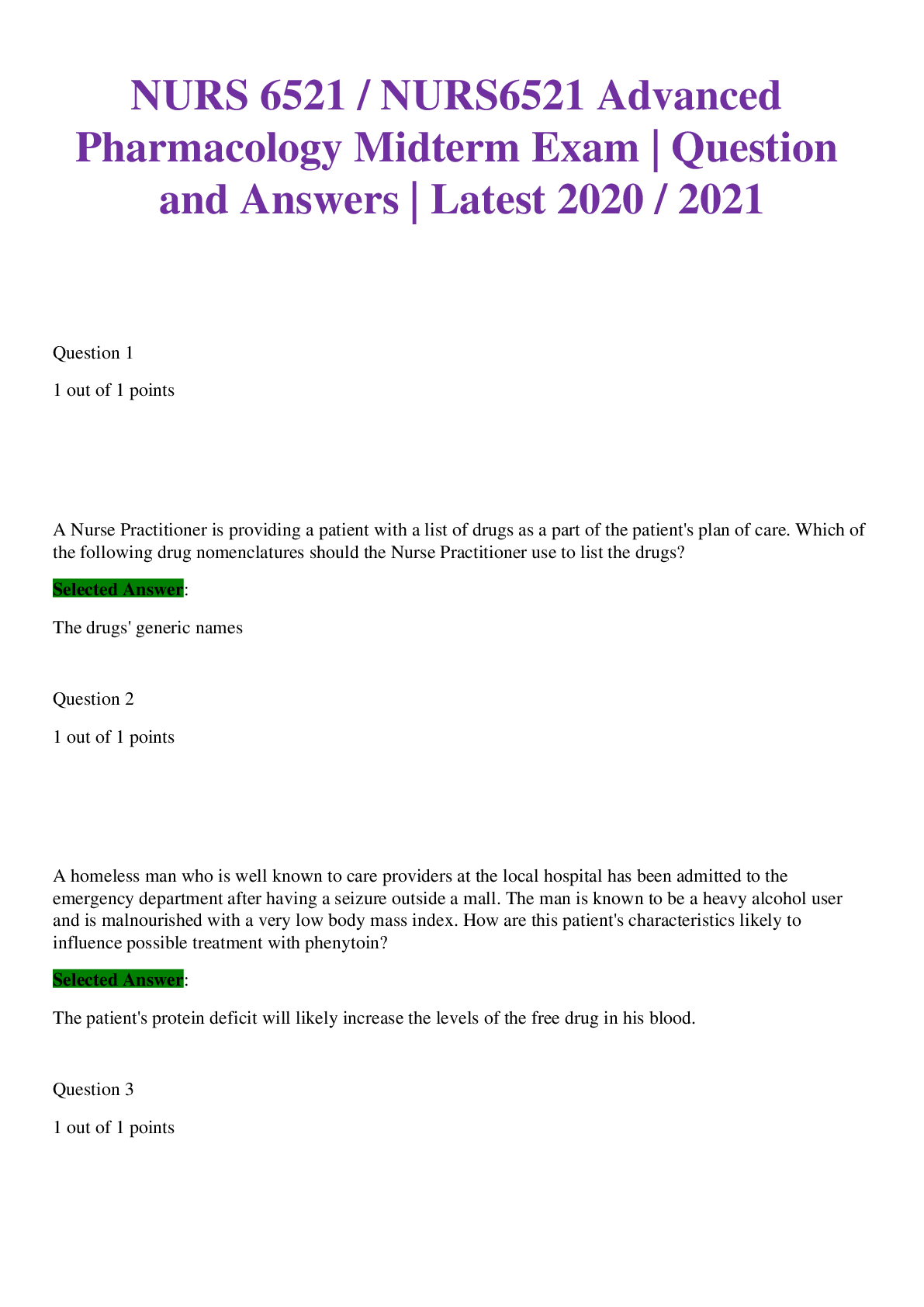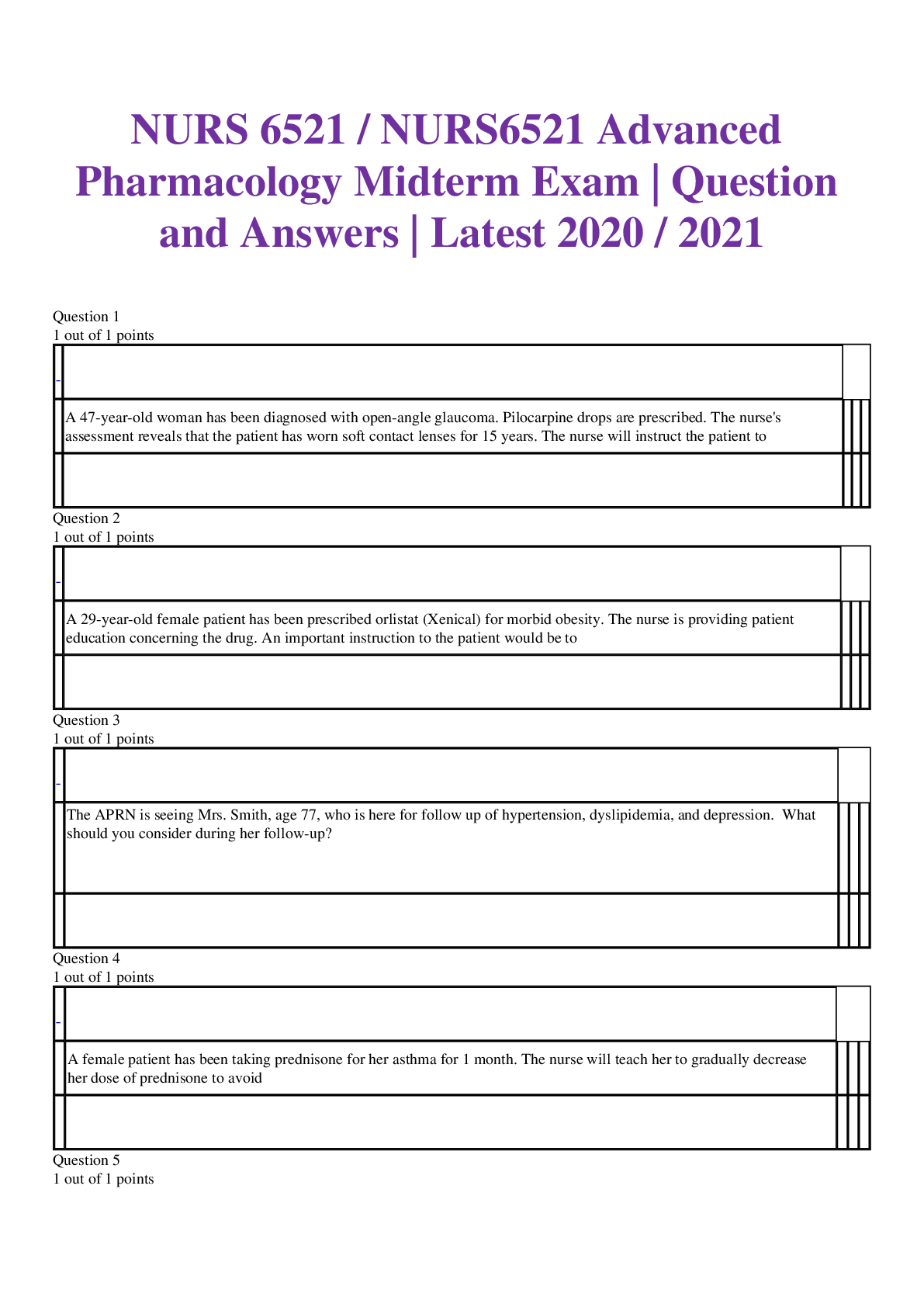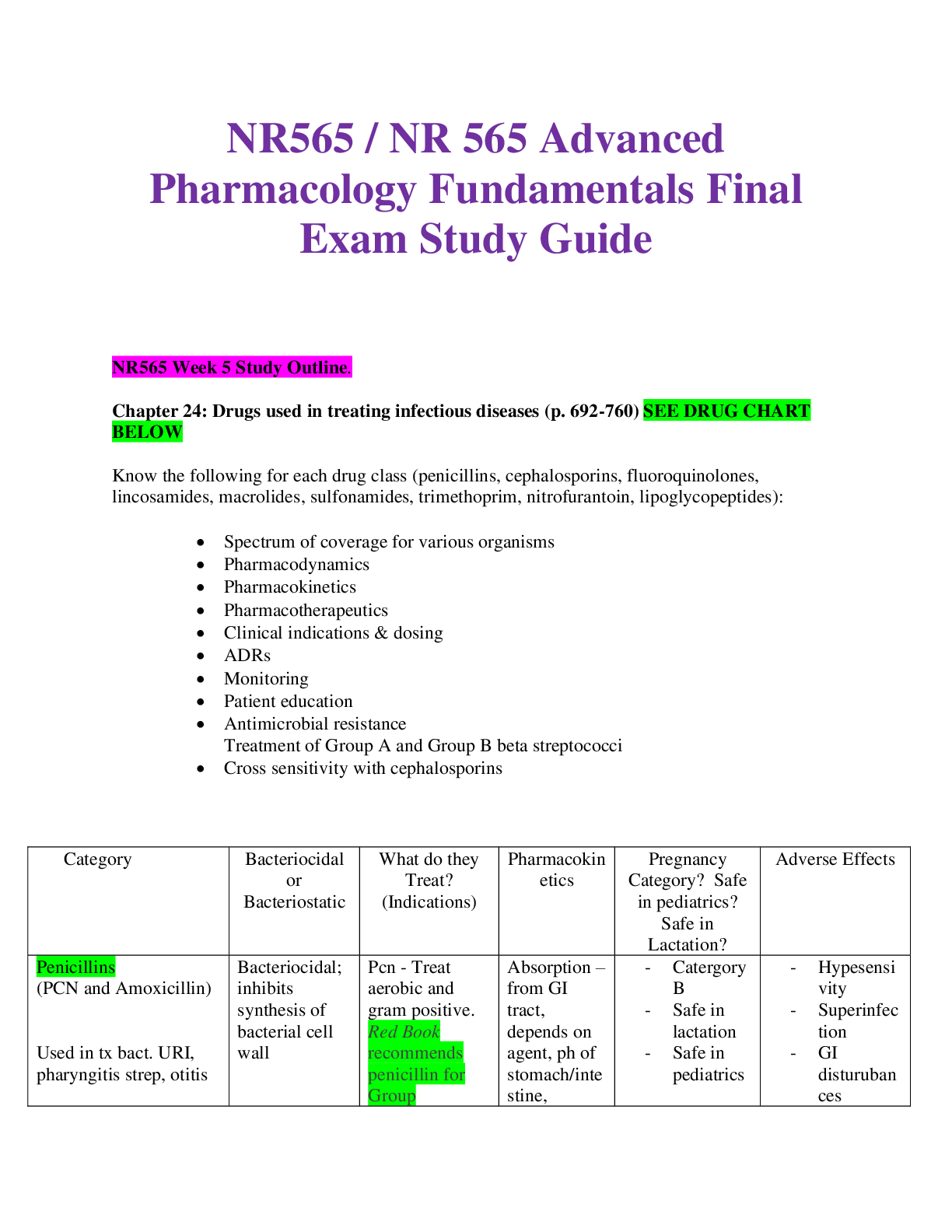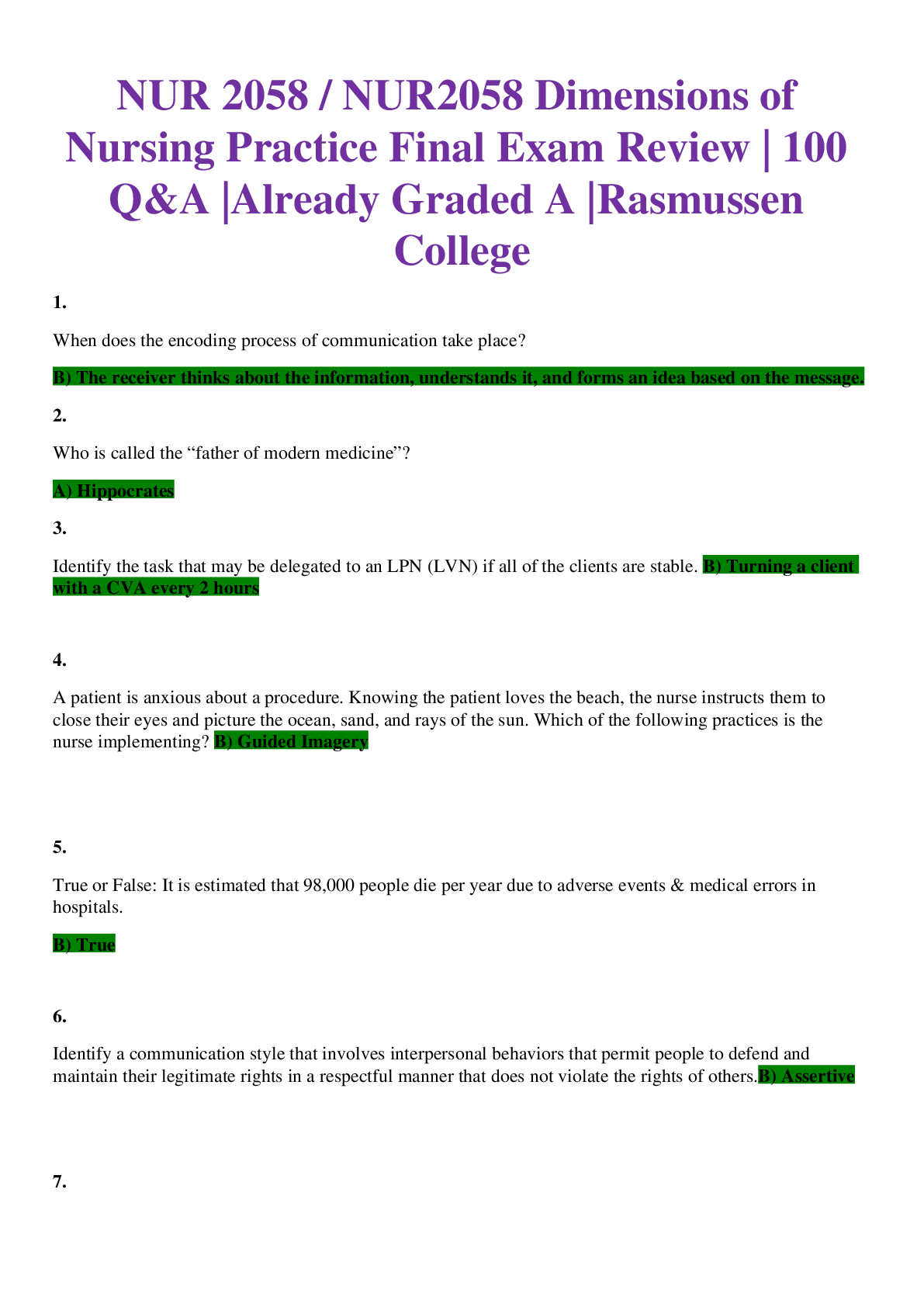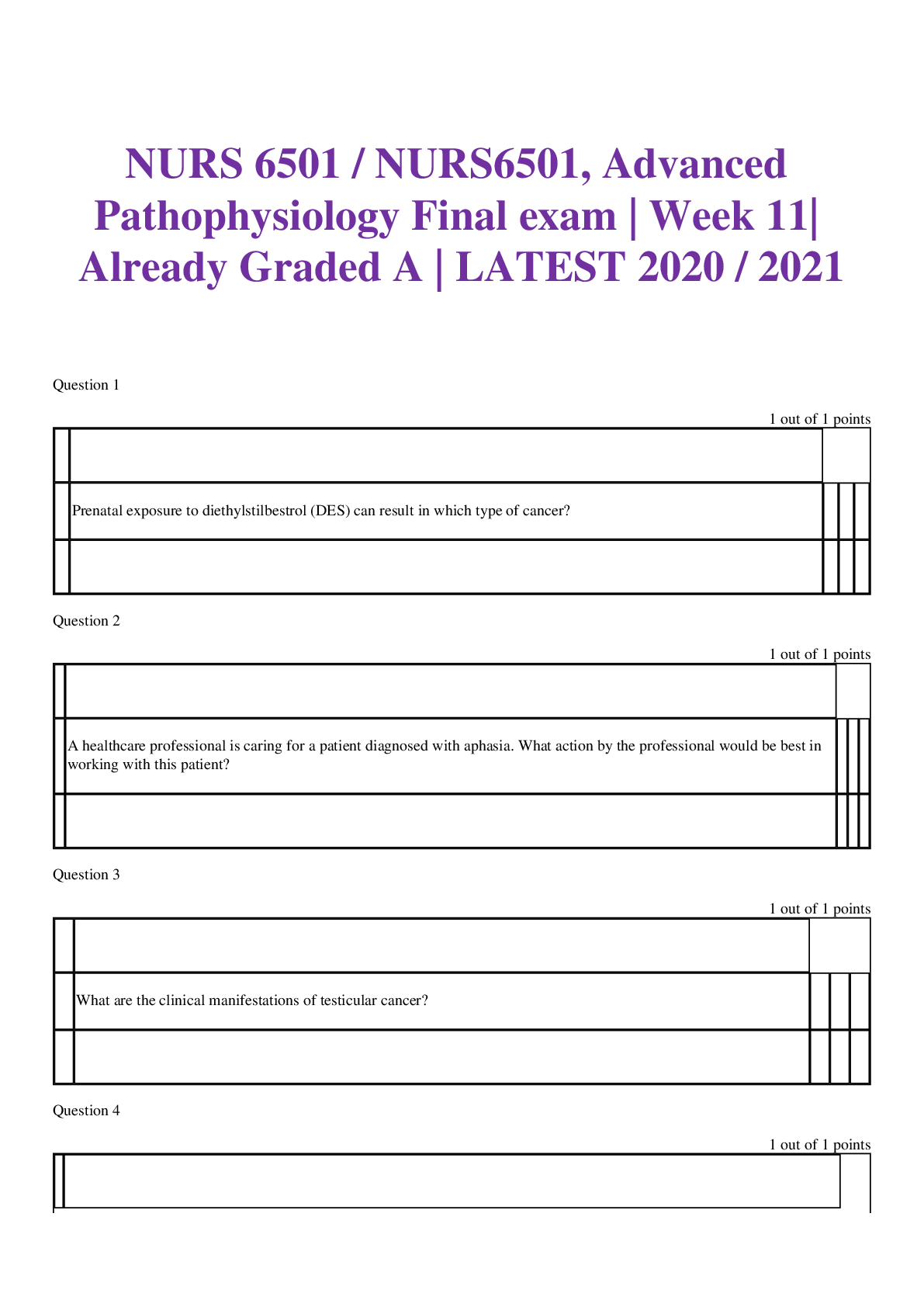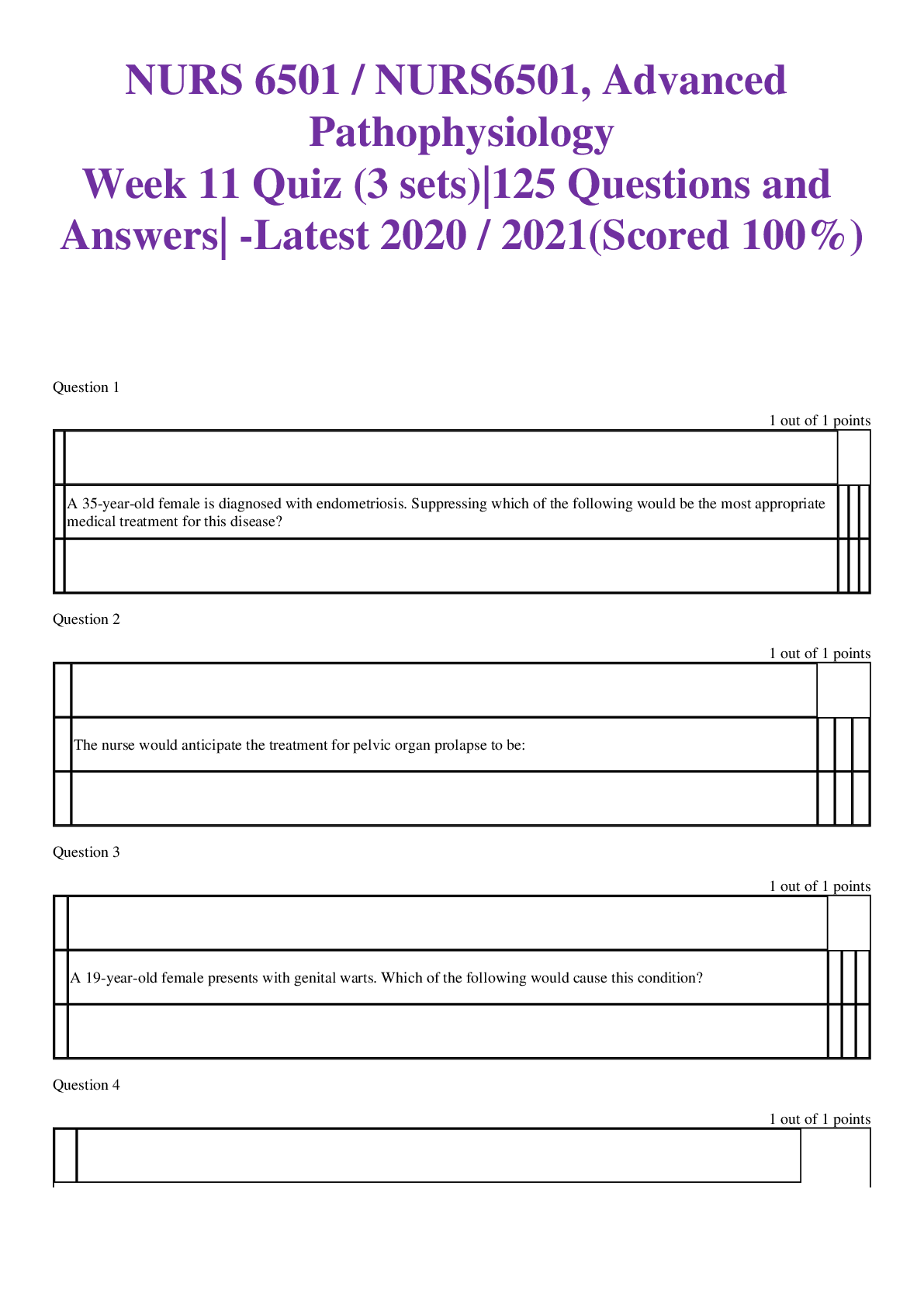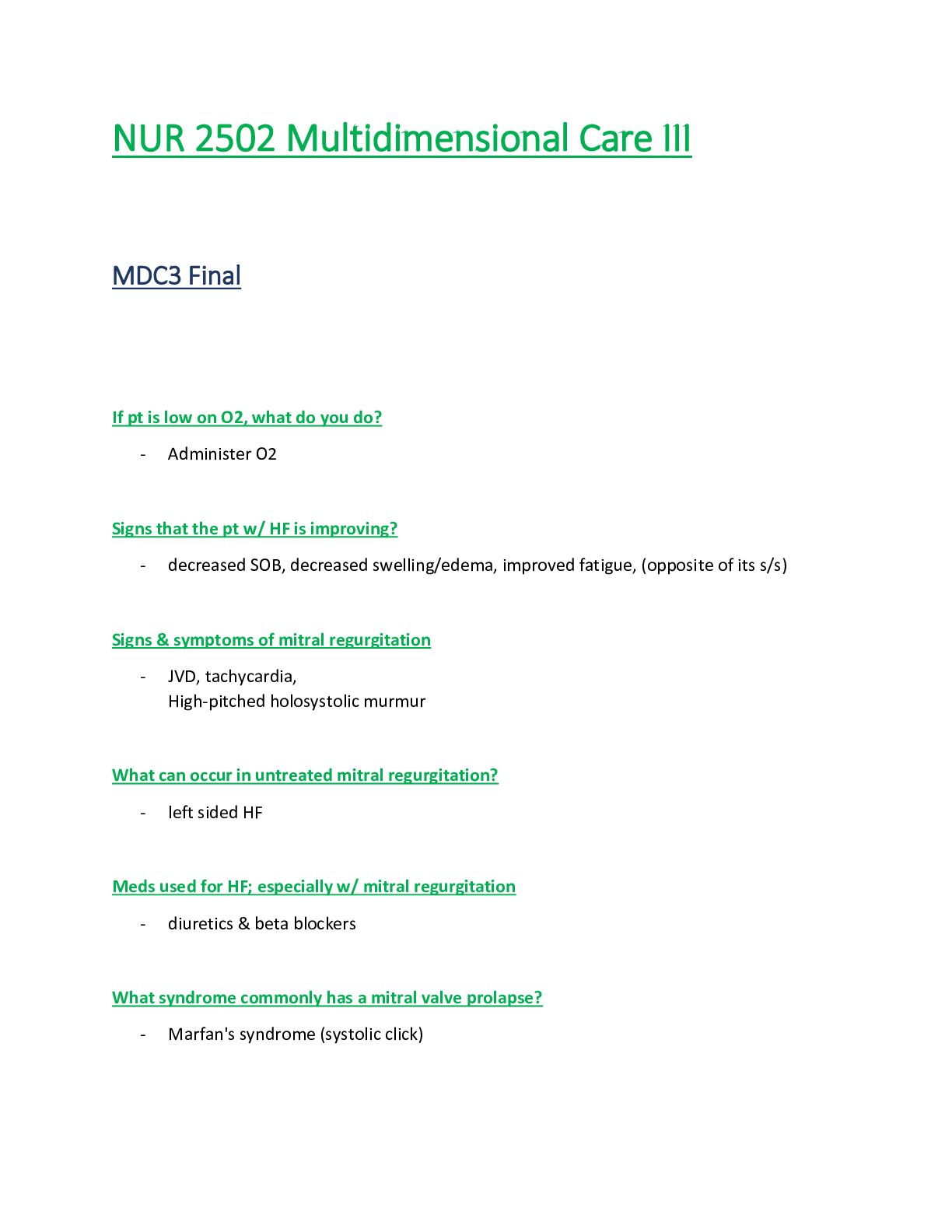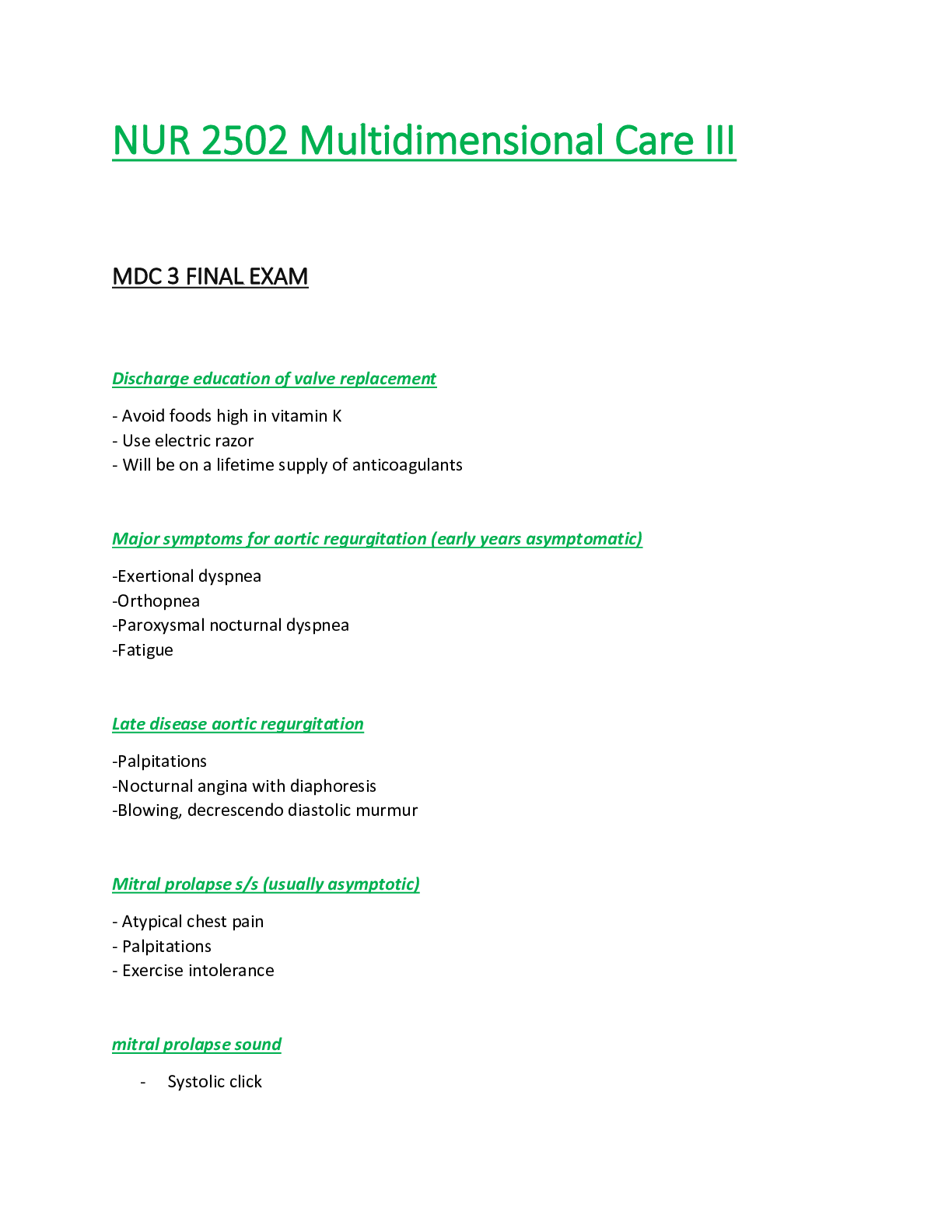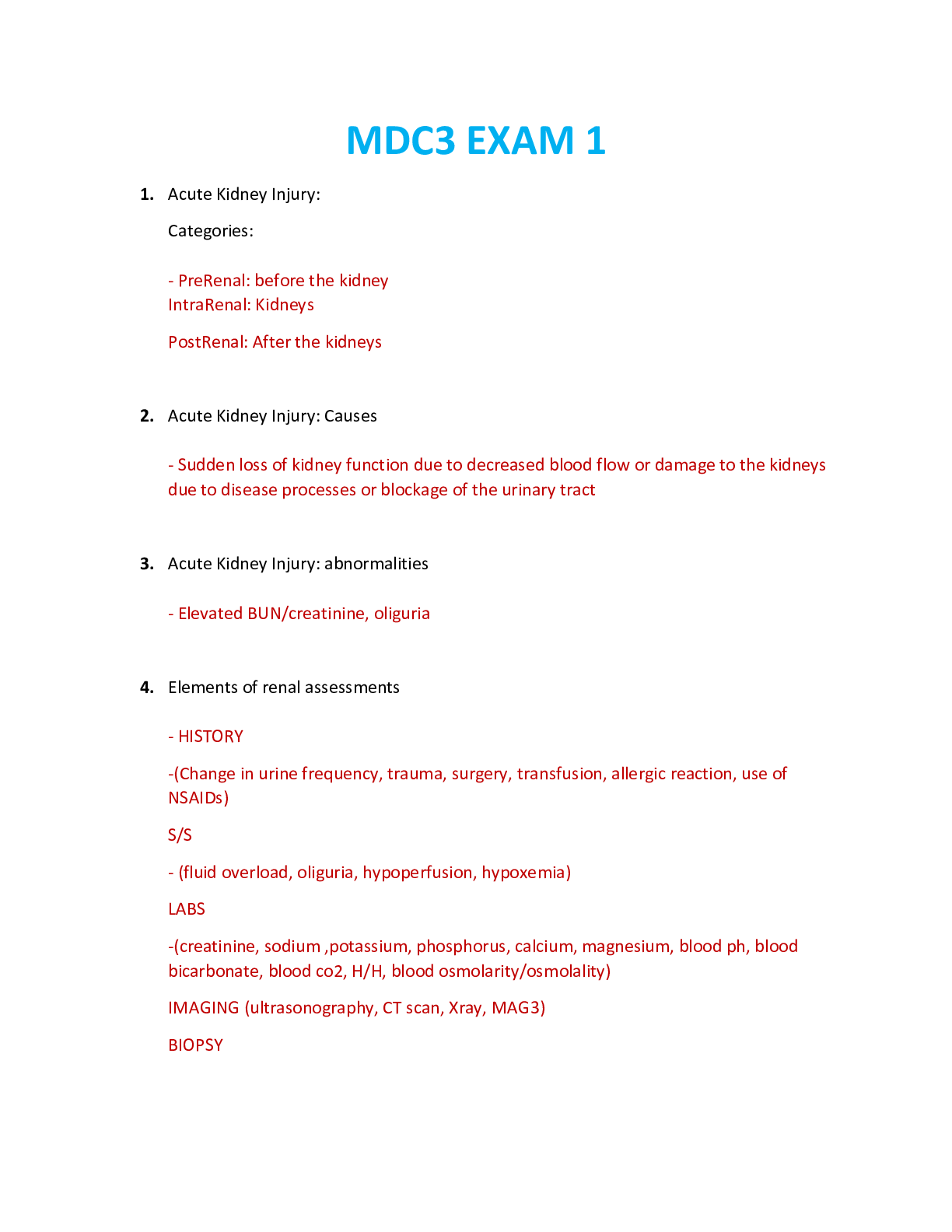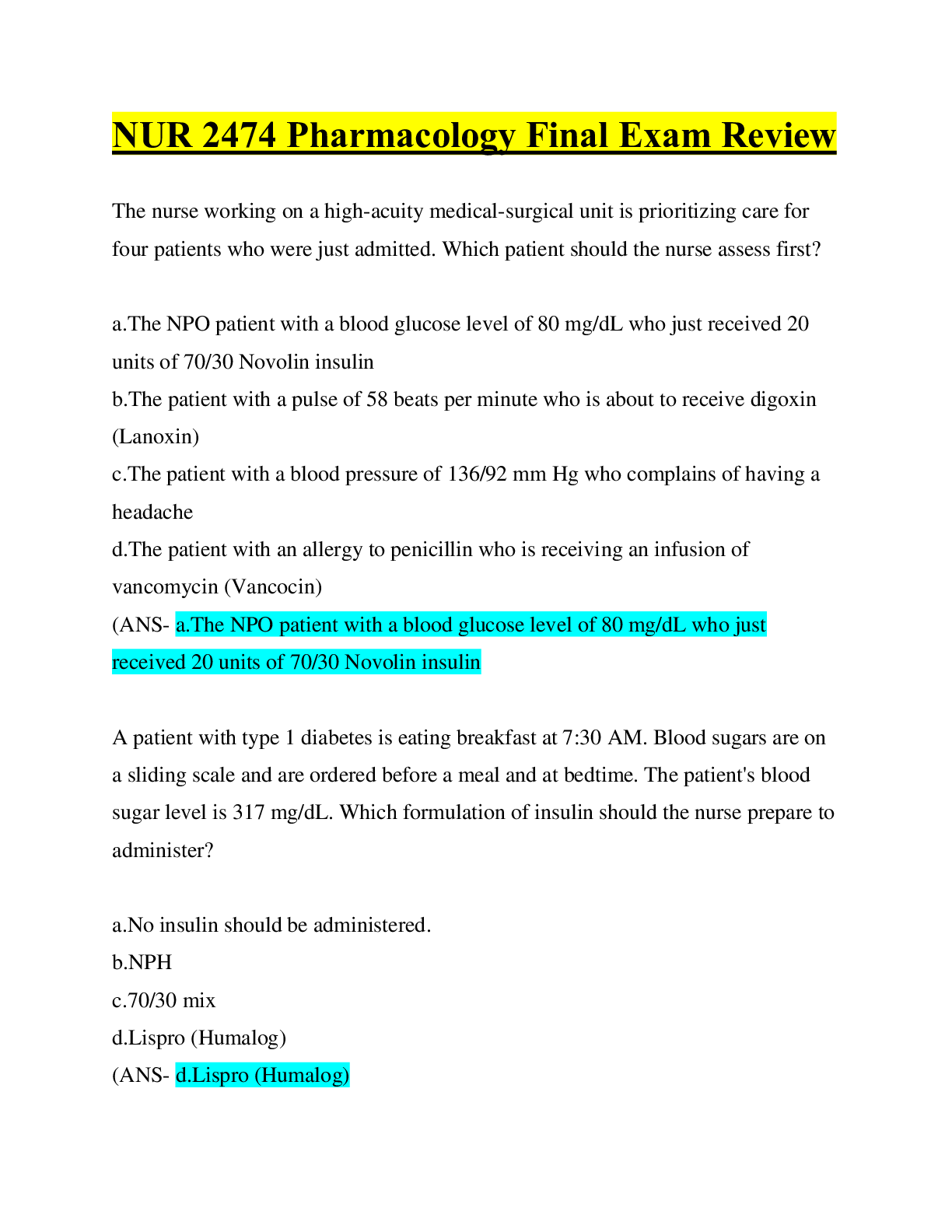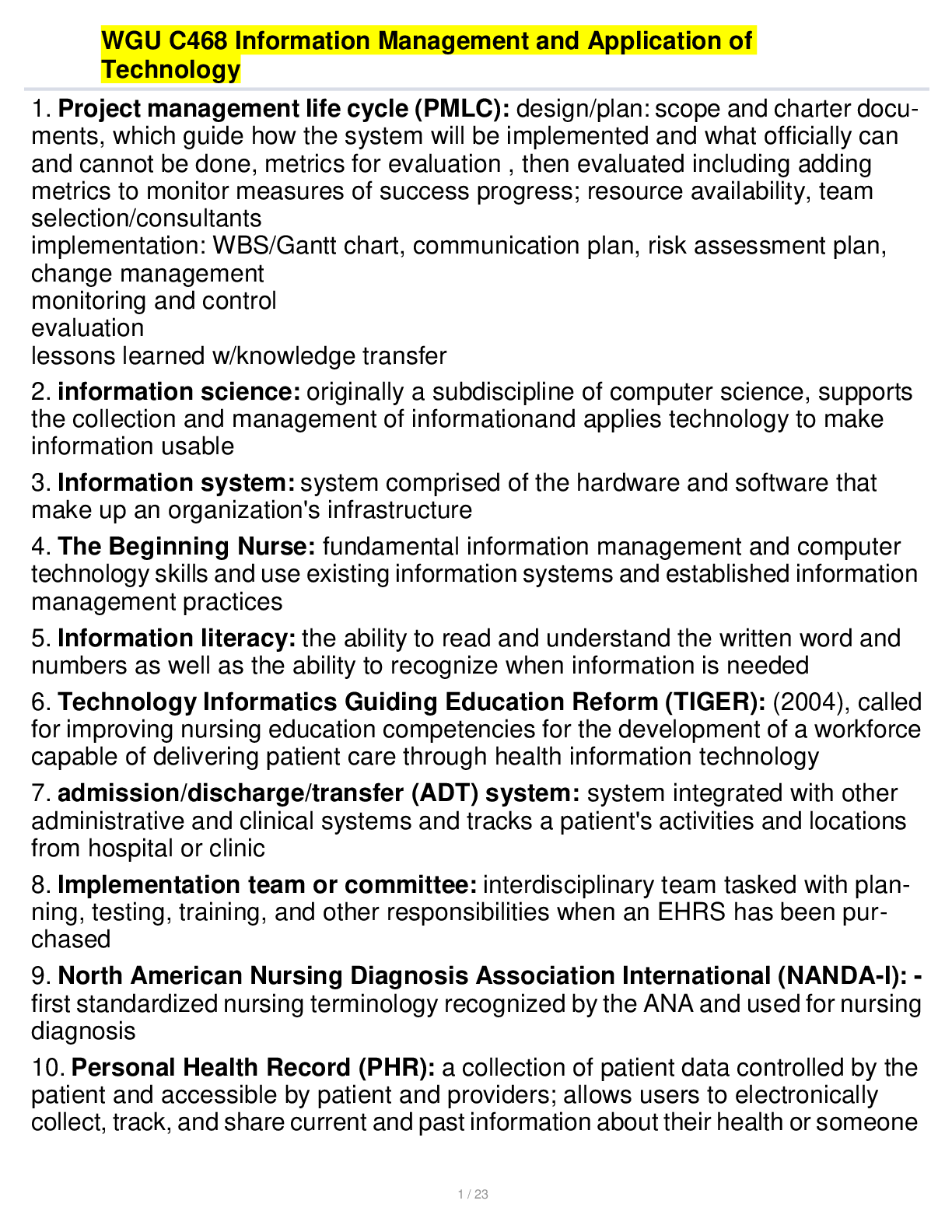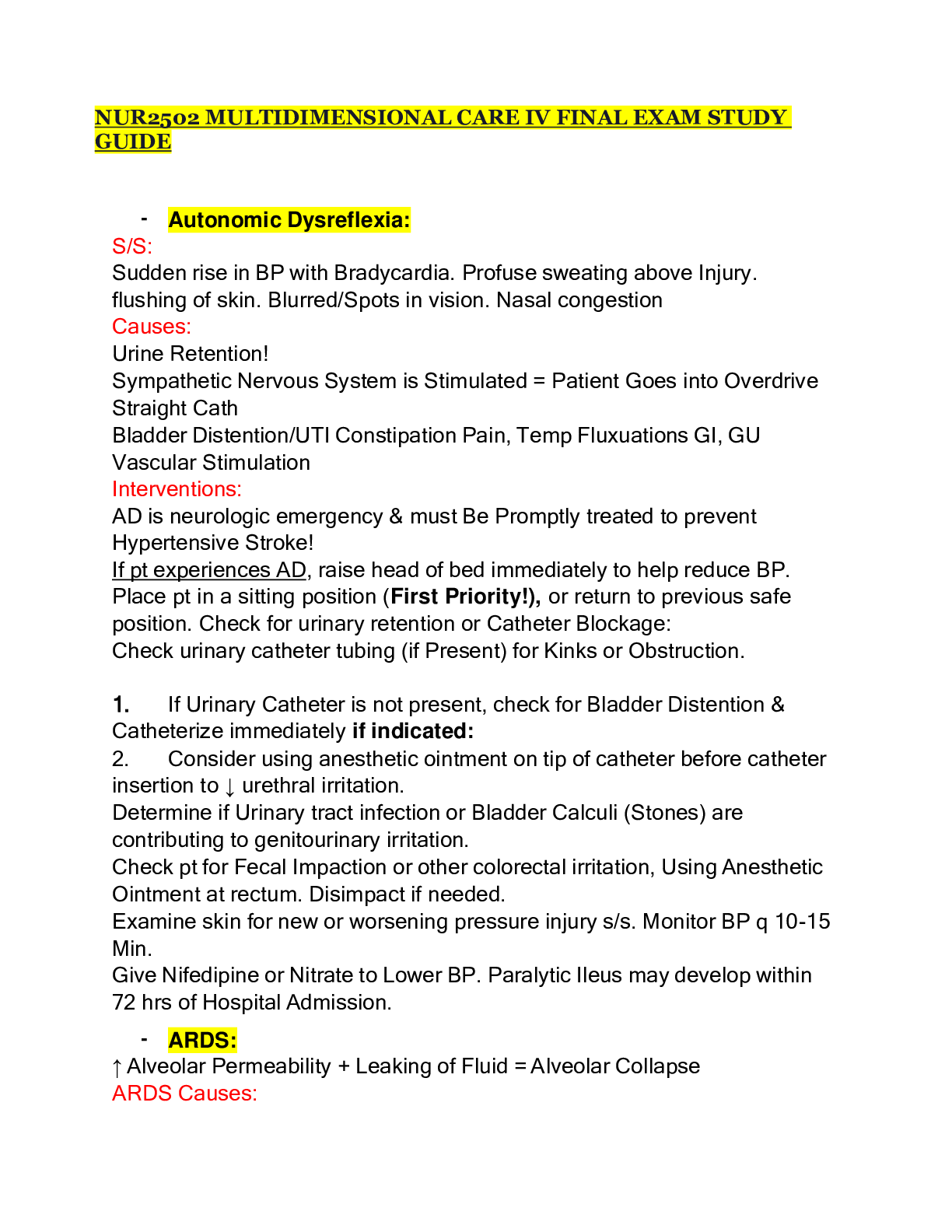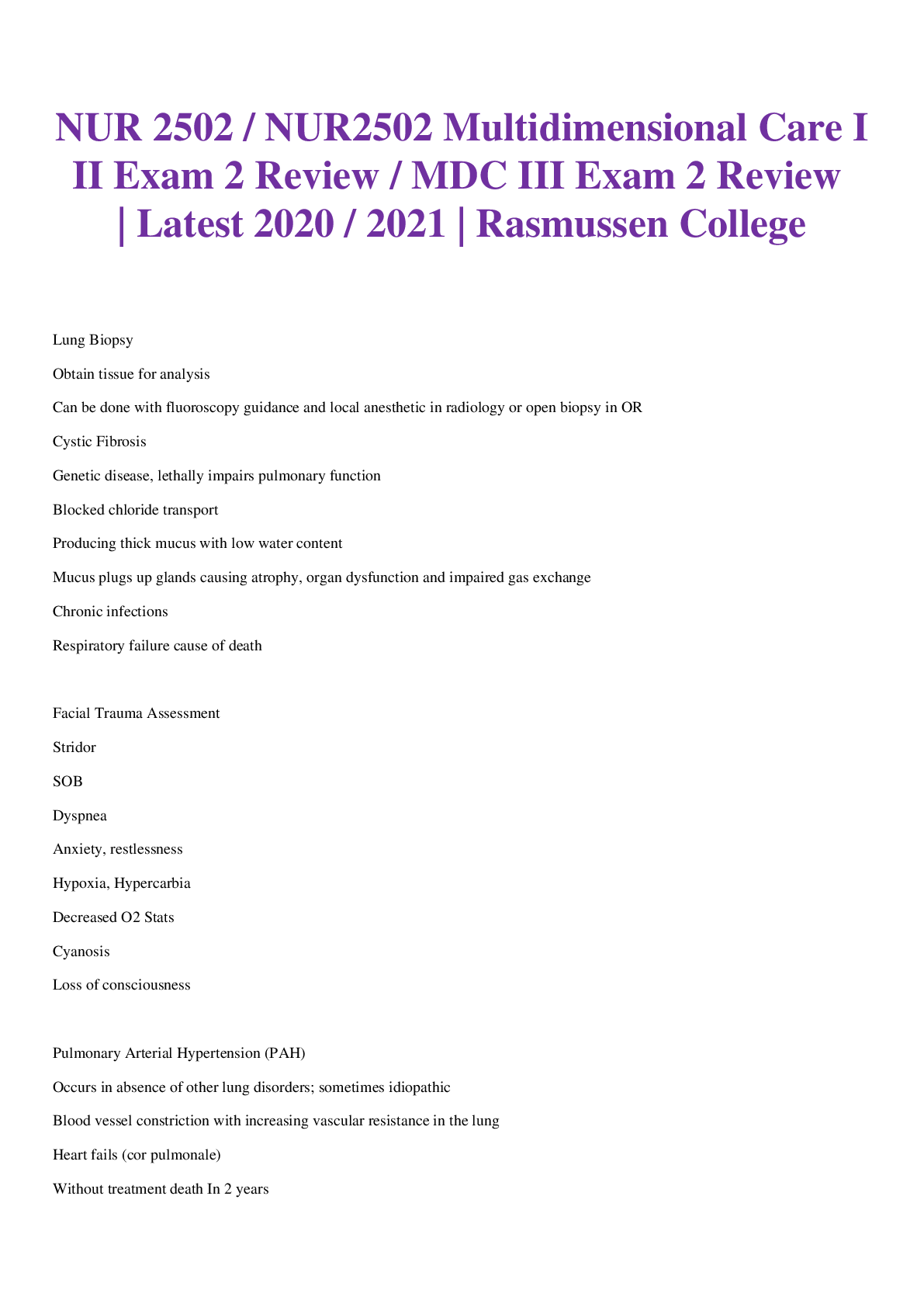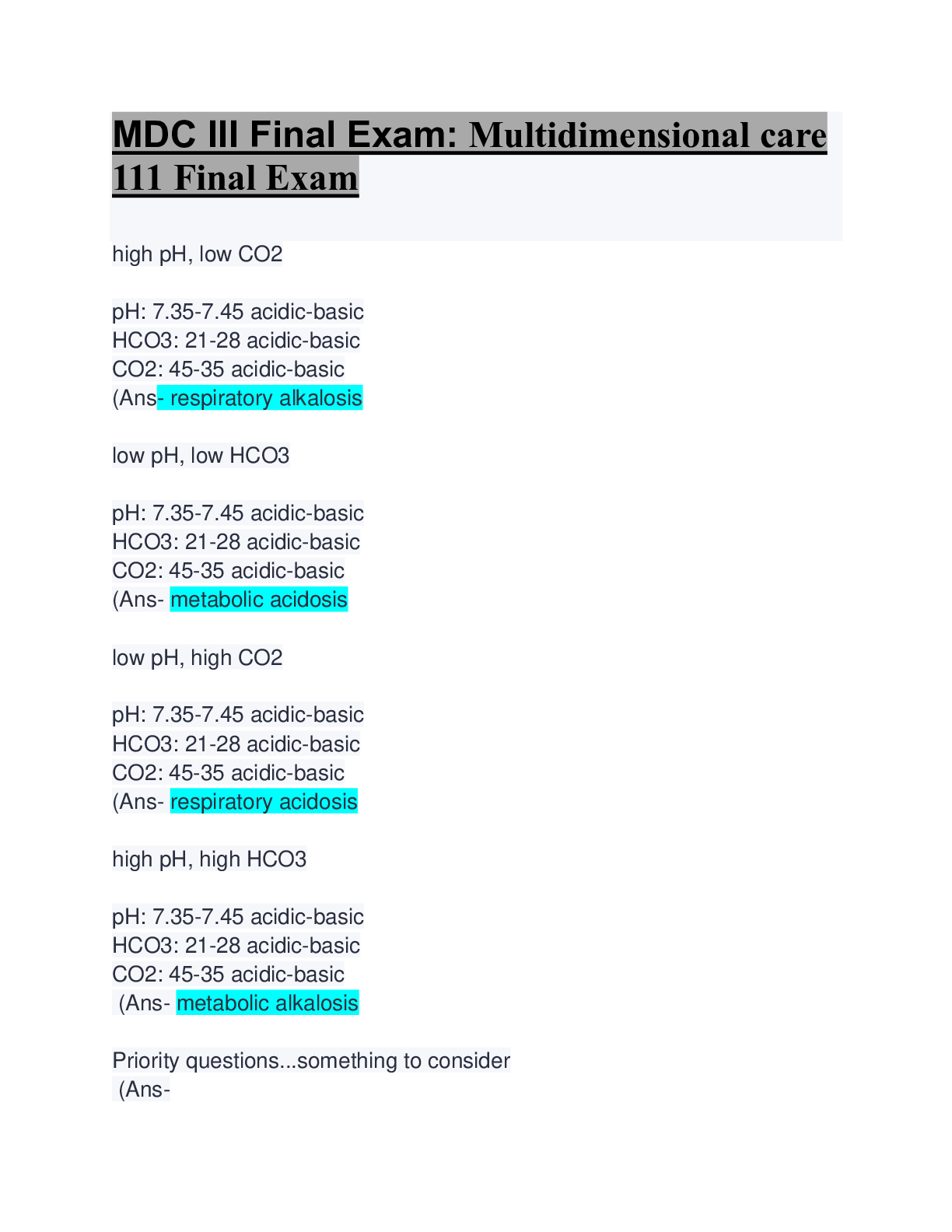*NURSING > EXAM > NUR 2502 / NUR2502 Multidimensional Care III Final Exam Review / MDC III Final Exam Review.| Rasmuss (All)
NUR 2502 / NUR2502 Multidimensional Care III Final Exam Review / MDC III Final Exam Review.| Rasmussen College
Document Content and Description Below
NUR 2502 / NUR2502 Multidimensional Care III Final Exam Review / MDC III Final Exam Review| Rated A Guide | Latest 2020 / 2021 | Rasmussen College 1. Education when discharging HF patient - di... et, activity, meds, weight monitoring - what to do if symptoms worsen - smoking cessation - see provider within 7 days - ensure ACE or ARB in left ventricular HF - identify home health needs 2. If the cough in left sided heart failure is pink or tinged it means - disease has progressed 3. What is a main psychosocial factor to help encourage with patients experiencing heart failure? - hope: the more hopeful they are, the better outcome 4. When monitoring weight, it is important to remember - same scale - in the morning before breakfast - can be delegated 5. H&H (hemoglobin and hematocrit) - identify anemia issues early which can cause of RIGHT sided HF 6. 3 major types of heart failure - Left sided heart failure - Right sided heart failure - High output heart failure (least common) 7. How do the cardiac valves change with increased age? - murmurs appear - valvular abnormalities result in rhythm changes 8. types auscultation sounds - Mitral stenosis (diastolic murmur): Rumbling, apical diastolic murmur - Mitral regurgitation (systolic murmur): high pitched holosystolic murmur - Mitral Prolapse: systolic click - Aortic stenosis (sytolic murmur): harsh systolic crescendo decrescendo murmur (diamond shaped murmur) - Aortic regurgitation (diastolic murmur): blowing decrescendo, diastolic murmur 9. Valvular Heart disease - caused by structural abnormalities - causes 3 main problems: stenosis, regurgitation, and prolapse. 10. Most common valvular disease - mitral valve (left atria to left ventricle) and AORTIC valve (left ventricle to aorta) 11. stenosis (or narrowing of the valve). - When the valve(s) opening becomes narrowed, it limits the flow of blood out of the ventricles or atria. The heart is forced to pump blood with increased force to move blood through the narrowed or stiff (stenotic) valve(s). - stiffening due to calcification or thickening - causes narrowing and prevents normal flow 12. regurgitation (or leakage of the valve). - When the valve(s) do not close completely, it causes blood to flow backward through the valve. This reduces forward blood flow and can lead to volume overload in the heart. - incomplete valve closure caused by fibrotic changes or calcification and causes back flow 13. prolapse - enlarges valve leaflets result in protrusion into the atria during systole 14. Mitral stenosis - The valve thickens by fibrosis and calcification - valve prevents normal flow of blood from the left atrium to the left ventricle 15. Mitral stenosis causes - the right ventricle hypertrophies and right sided heart failure occurs - increased left arterial pressure [Show More]
Last updated: 1 month ago
Preview 1 out of 24 pages
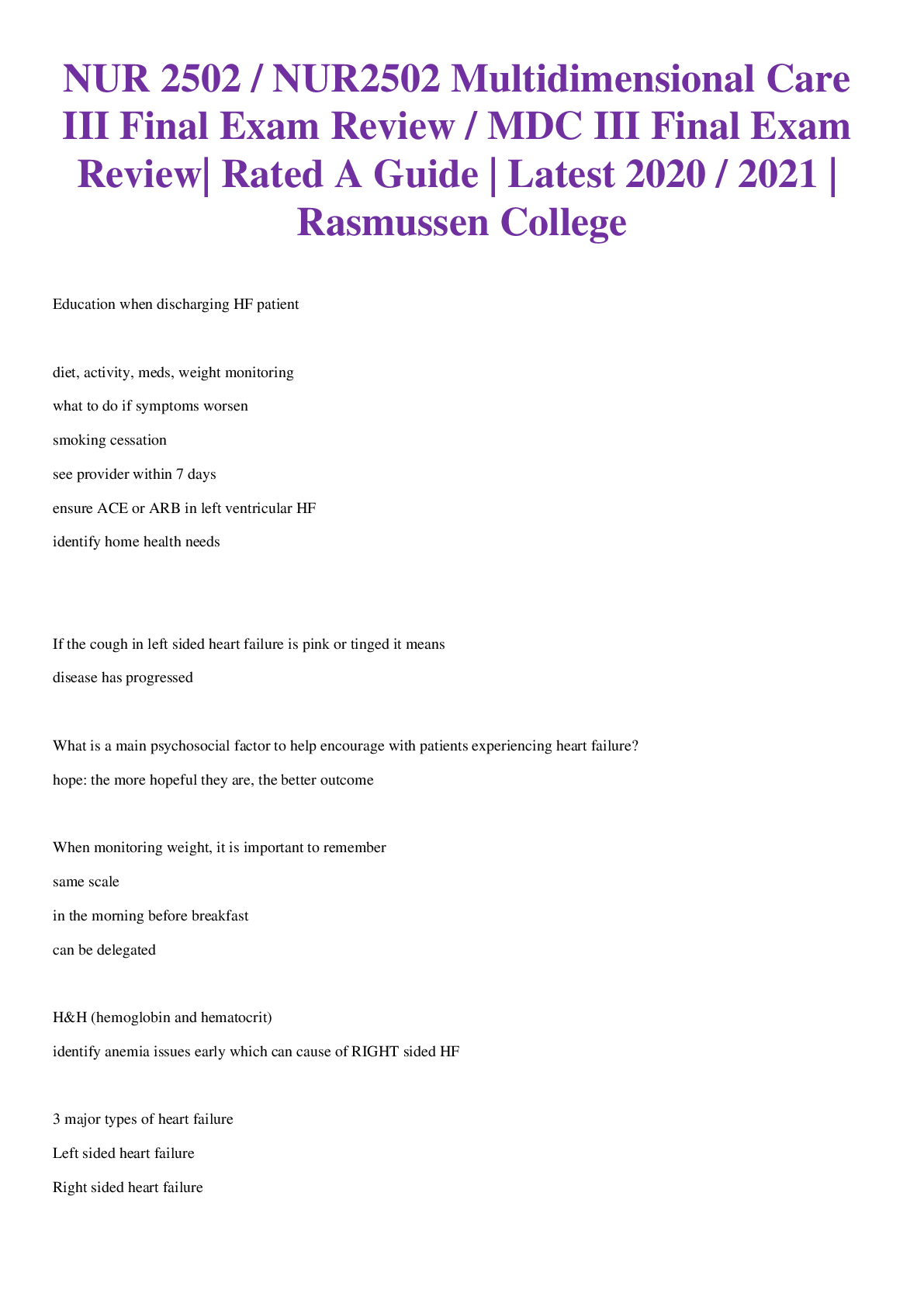
Reviews( 0 )
Document information
Connected school, study & course
About the document
Uploaded On
Dec 08, 2020
Number of pages
24
Written in
Additional information
This document has been written for:
Uploaded
Dec 08, 2020
Downloads
2
Views
171

